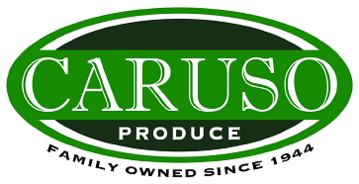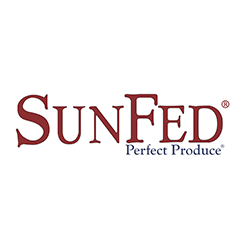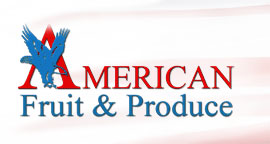As director of global food safety, quality assurance, governance and regulatory compliance for Dole, Amy Parks’ lengthy title encompasses the breadth and complexity of her role overseeing food safety strategies across operations in about 30 countries.
Her work centers on building globally harmonized, risk-based systems that are flexible enough to adapt to challenges in the dynamic fresh produce industry. With a passion for process and cross-functional collaboration, Parks helps guide Dole’s efforts to not only ensure food safety but also to advance industrywide standards through research, innovation and leadership.
Editor’s note: The following has been edited for clarity and length.
The Packer: What is your primary responsibility as director of global food safety, quality assurance, governance and regulatory compliance?
Parks: My main responsibility is to develop and implement our global food safety programs. We operate in about 30 countries, so I’m focused on setting the overall food safety strategy. I work closely with each division and region to harmonize programs and policies, helping standardize our approach across the board. I also identify food safety risks for both our business and consumers and collaborate with internal teams to manage and mitigate those risks effectively.
Could you give an example of how you assess or manage risk?
Sure. We handle a wide range of commodities, including higher-risk items like leafy greens, which have been linked to foodborne illness outbreaks in the past. When assessing a commodity, we look at several factors such as whether growers have food safety programs in place, if they meet regulatory requirements and whether they comply with internal or dual standards. We also ask if additional testing or oversight is necessary based on the commodity’s risk profile. The goal is to understand where the risks lie and determine what’s needed beyond our baseline requirements to ensure food safety.
You’ve mentioned a fascination with processes. Can you elaborate on that?
I love learning how things work. Understanding the process behind operations gives food safety professionals a better grasp of business needs and helps us avoid being seen as a barrier. The more we understand the daily realities of the field, the packinghouse or the plant, the more effectively we can collaborate.
For instance, in my last role, an R&D leader told me food safety always delays product launches. When I asked why, he explained that we needed to conduct an eight-week validation study, but marketing and R&D were only informing us three weeks before launch. Once we understood the disconnect [in the] process, they started involving us earlier, and the problem disappeared. That’s the kind of alignment I strive for.
How is food safety in fresh produce different — or more challenging — than in other sectors?
Fresh produce is unique. I’ve worked in multiple sectors — processed cheese, frozen foods, even in a research lab — and most products there have a kill step. In fresh produce, we deal with food that’s grown outdoors and typically eaten raw. It’s also incredibly diverse — everything from root vegetables to leafy greens to fruits. Each commodity has its own risks, which can vary by geography, climate or farming practice. It’s complex, challenging, and honestly, fascinating.
What are some of the biggest challenges you’re facing right now, and how are you addressing them?
One of the biggest challenges is building a risk-based food safety system that’s also flexible. We have to meet internal standards, regulatory requirements and customer expectations. And we work with a mix of suppliers: Dole-owned farms, contract growers and open-market purchases.
If there’s a disruption like a natural disaster, we need a system that can adapt while still delivering safe products. That means understanding how to manage risk across different supply chain models and decision-making structures without compromising safety.
What’s something you’re most proud of in your work?
I’m most proud of the cross-functional collaborations that lead to real solutions. For example, we’ve been working globally to update definitions in our food safety programs. A simple question like “What is a grower?” turned out to be more complex than expected. We have Dole-owned farms, individual growers, co-ops and contract farms. Clarifying these definitions helped us set clear expectations across the company.
Another moment I’m proud of came during the 2021 romaine lettuce outbreak. Because we control the full supply chain — farm to fork — we were able to do a deep root-cause analysis. While the facility showed no contamination, our ag operations team identified the issue was linked to specific harvest crews and equipment. That breakthrough was only possible because of strong collaboration across departments.
How is Dole advancing food safety across the broader fresh produce industry?
We’re a campaign contributor to the Center for Produce Safety, which funds research specifically for the produce sector. I sit on their technical committee, helping draft research proposals based on what we’re seeing in the field. We also collaborate closely with other industry leaders. After the 2021 outbreak, our former vegetable division president brought together peers across the industry and launched the Harvest Forward initiative, focused on improving harvest equipment design and sanitation. We want to be at the forefront of meaningful change, not just for Dole, but for the industry as a whole.
Lastly, how do you use data and research to drive business decisions?
I’m a total data nerd — and proud of it. Data helps remove emotion from tough decisions. Say two teams argue over whether a production line runs better at 60 or 70 bags per minute. Data can tell us whether faster speeds are causing more product rework or quality issues.
One example: We noticed seasonal upticks in environmental pathogen hits at one facility. After tracking and trending the data, we found a study from CPS and Cornell that showed increased Listeria prevalence in regional soils during certain times of year. That research helped validate what we were seeing and gave us a better understanding of how to manage risk. It’s all about pairing observation with evidence to make smart, informed decisions.



















